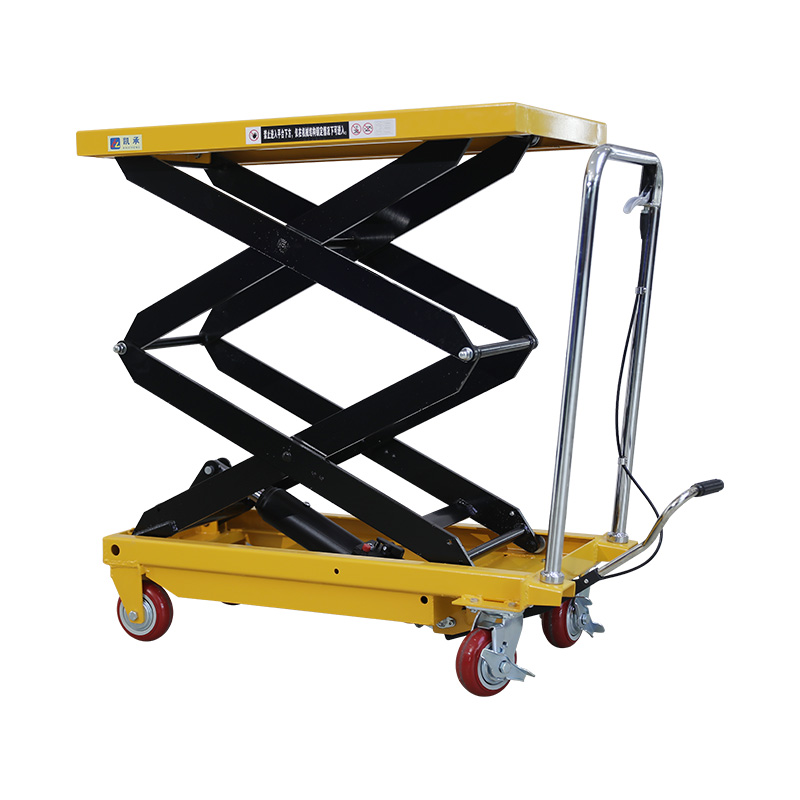Whether warehouse logistics trucks can operate stably in special environments such as high and low temperatures depends mainly on the design of the truck, the materials used, the power system, and the performance of related accessories. In order to work effectively in these extreme environments, trucks usually take a series of design and technical measures. The following are several key factors that affect the operation of warehouse logistics trucks in high and low temperature environments:
1. Adaptability of the power system
Electric trucks: Batteries are the core components of electric warehouse logistics trucks. Battery performance may be affected in extreme temperatures, especially in cold environments, where the battery life may be greatly reduced. To address this problem, many electric trucks are designed with battery temperature control systems (such as heating systems) to ensure that the battery remains in good working condition in low temperature environments. In addition, some batteries also use special materials and chemical compositions to improve low-temperature performance.
Diesel/natural gas trucks: These traditional power systems can usually operate over a wider temperature range, but may also be limited by problems such as changes in fuel viscosity and difficulty starting the engine. In low-temperature environments, using winter-specific fuel or a fuel preheating system can avoid these problems.
2. Body and material design
High temperature resistance design: In high temperature environments, the body materials of trucks (such as metal, plastic, etc.) must be able to withstand the effects of high temperatures without deformation or performance degradation. For example, the truck's shell, tires, brake system, and transmission system all need special design to avoid thermal expansion and material aging at high temperatures.
Low temperature resistance design: In low temperature environments, the truck's cooling system, liquids (such as brake fluid, engine oil, etc.) and lubrication system are prone to freezing or stickiness, so trucks usually use low-temperature special lubricants and coolants, as well as heating systems to ensure the normal operation of the engine and key components. In addition, the vehicle's sealing design will also consider antifreeze performance at low temperatures to prevent air leakage or sealing failure.
3. Temperature control system and cold chain logistics function
For the transportation of goods that require temperature control (such as food, medicine, etc.), many warehouse logistics trucks will be equipped with cold chain systems, including built-in refrigeration or heating equipment to ensure that the goods can be kept within a suitable temperature range in high or low temperature environments.
Cabin temperature control: Some trucks are also equipped with adjustable cabin temperature control systems, which can automatically adjust the temperature in the cabin according to changes in ambient temperature to ensure that the cargo will not be damaged by changes in external temperature.
4. Protection of electronic equipment and sensors

Under extreme temperature conditions, electronic equipment on the truck (such as navigation systems, sensors, monitoring systems, etc.) may be affected. In order to ensure its stable operation, modern warehouse logistics trucks usually use high and low temperature resistant electronic components, and are equipped with heat dissipation and heating devices on key electronic components to ensure that the equipment can work normally in harsh environments.
On-board diagnostic system: Some trucks are equipped with on-board diagnostic systems that can monitor the vehicle's temperature, engine performance and battery status in real time, and provide early warnings to help drivers take appropriate measures in abnormal temperatures to avoid equipment failures.
5. Driver comfort and safety
Driver comfort is also crucial in high or low temperature environments. Many trucks are equipped with air conditioning and heating systems to ensure that drivers can still operate comfortably under different temperature conditions. In addition, seat heating systems and cold-resistant driving clothing are also standard in cold environments to enhance driver safety and comfort.
6. Tires and brake systems
High temperature environment: Under high temperature conditions, truck tires are prone to wear and may burst due to overheating. To cope with high temperatures, trucks usually use high-performance tires that are resistant to high temperatures and are equipped with anti-skid braking systems to prevent the brake system from failing due to overheating.
Low temperature environment: In low temperature environments, truck tires and brake fluids also need to be specially designed to avoid performance degradation due to low temperatures. Truck tires usually use winter tires, and their materials and pattern designs can ensure good grip on ice and snow roads.
7. Challenges of cold chain logistics and long-term transportation
For long-term transportation, especially in extreme environments, the fuel consumption and endurance of trucks need special consideration. For example, the endurance of electric trucks in cold weather requires special attention, while traditional fuel trucks may be affected by changes in fuel efficiency. For this reason, the truck's energy-saving system, fuel efficiency optimization, and backup energy systems (such as auxiliary battery systems) are very important.
Whether warehouse logistics trucks can operate stably in special environments such as high and low temperatures depends on the overall design of the truck, the materials used, and the technology. Modern warehouse logistics trucks can work effectively in extreme environments by adopting advanced temperature control systems, battery management technology, temperature-resistant materials, and intelligent monitoring systems. For cold chain logistics and goods that require special temperature control, trucks are usually equipped with special temperature control systems to ensure safe and stable transportation of goods. Therefore, choosing trucks suitable for specific environments and performing reasonable maintenance and management can ensure their stable operation in high or low temperature environments.


 English
English Español
Español



